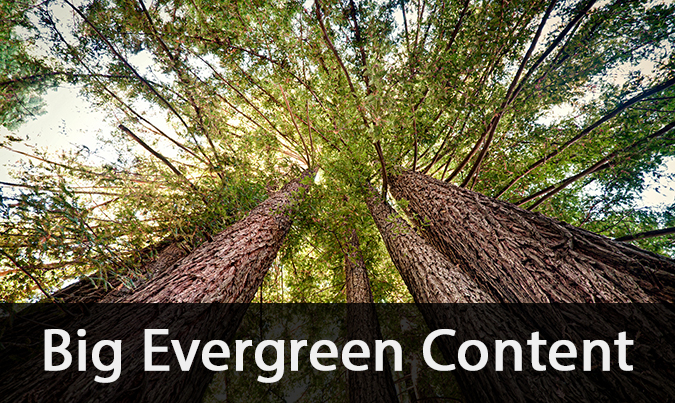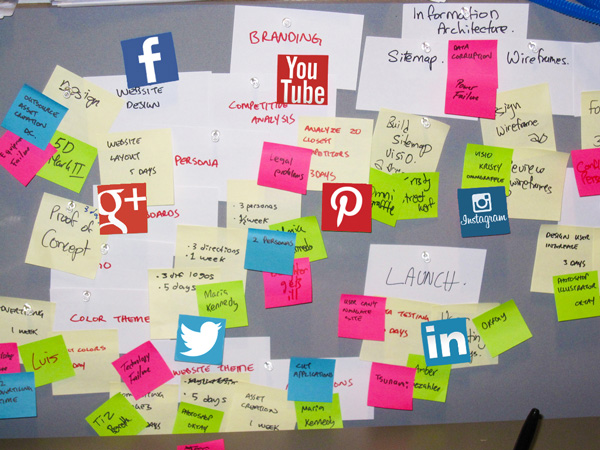Users can access content on their smartphone or tablet in two ways – via a browser or by downloading an app. You should be making sure that potential customers can access your content via one of these options:
- Browser – Websites (desktop, mobile & responsive) and Web Apps
- Application – Native Apps
So which one should you choose? Use our helpful guide to decide!
We run an Android App Workshop, teaching you how to design, develop and market apps for the two most popular mobile operating systems - with a combined market share of 82% between them!
Aaron Charlie
5 Feb 2014
Skeuomorphism is, according to Wikipedia, "a physical ornament or design on an object made to resemble another material or technique." It's a somewhat controversial design technique that has been around for centuries.
In terms of web and mobile design, skeuomorphism is most commonly referred to in terms of icons or even apps and software which use representational design elements that possess little or no functionality. You can learn all about skeuomorphism on our InDesign Training.
An example of it would be the notepad on Apple iOS devices which has been designed to look like a traditional paper notepad. There's no need for it to be designed like this, from a functionality perspective, but the way it looks makes its purpose easily identifiable. The skeuomorphic philosophy employed by Apple is a big part of their approach to making tech simple and ultra-user-friendly.
It's not just Apple that uses this technique though; it has been in use in the tech industry for years, especially with regard to buttons and icons.

But is it a good thing? Should we really be using symbols that don't mean anything in terms of the app or software?
Aaron Charlie
29 Apr 2013
© - Where is the copyright symbol on my Mac?
© - hold alt key & press g
# - Where is the Hash tag on my Mac?
# - hold alt and shift (caps lock) & press 3
% Where is the percentage Symbol on my mac?
For percentage symbol you need to use the character viewer. If this is not shown in the menu at the top right of your screen you will need to enable it.

Heather Buckley
27 Jun 2011
© - Where is the copyright symbol on my Mac?
© - hold alt key & press g
# - Where is the Hash tag on my Mac?
# - hold alt and shift (caps lock) & press 3
% Where is the percentage Symbol on my mac?
For percentage symbol you need to use the character viewer. If this is not shown in the menu at the top right of your screen you will need to enable it.

Heather Buckley
27 Jun 2011
In 2013, most businesses realise the importance of content. That's why so many SEO agencies are repositioning themselves as content agencies, or at least offering it as a primary product. Our Content Marketing courses used to attract mainly bloggers, but since the Panda and Penguin Google updates we have seen a large increase in SEOs wanting to learn about content.
Yet this mass conversion to content brings up some issues - there is too much noise. Most businesses are still stuck in an outdated content strategy - regular, mediocre quality blog posts with little intent. The content is happening, but is it working?
With content at the forefront of so many marketing strategies, it seems at first glance that big businesses have a massive advantage. Whole in-house marketing teams as well as high profile agencies on hand to craft incredible content. How does a small business compete against this with a 1-3 person marketing team?

Big Evergreen Content
The idea for this post was sparked by Hannah Smith's talk at BrightonSEO 'Go Big or Go Home'(excellent write up on State of Search), which prompted me to revisit Dr. Pete's SEOmoz post at the end of last year 'Why Big Content Is Worth the Risk'. Both Hannah and Dr. Pete explain why big content is necessary and how it can help your business stand out in a very crowded world of below par blog posts:
"We all want the low-hanging fruit, but let’s be honest – the low-hanging fruit is rotten, bruised, and covered with the grubby fingerprints of all the other spoiled brats pawing at it."
The consensus of both the talk and the post is that big content takes around 40 hours to produce. Hannah compared this to an average 12 hours for 'small content' but I think that's a huge overestimation for the majority of businesses. James Carson recently alerted Twitter to the existence of a job ad for an agency looking for a Marketing Executive who for £18,000 a year had to write 25 blog posts a day. That's well over 6,000 articles a year on a range of topics, written by somebody with little knowledge about the subject and obviously no research.
With that much noise, it's important to be different to break through, and that's where big content comes in. But I'm going to go a step further and ask you to consider another element - sustainability. Another popular topic at BrightonSEO, and a common phrase in marketing blogs at the moment is Evergreen Content.
In the rest of this post I'm going to try and convince you why your content should be both big and evergreen for the holy grail of content marketing.
Craig Charley
22 Apr 2013
In 2013, most businesses realise the importance of content. That's why so many SEO agencies are repositioning themselves as content agencies, or at least offering it as a primary product. Our Content Marketing courses used to attract mainly bloggers, but since the Panda and Penguin Google updates we have seen a large increase in SEOs wanting to learn about content.
Yet this mass conversion to content brings up some issues - there is too much noise. Most businesses are still stuck in an outdated content strategy - regular, mediocre quality blog posts with little intent. The content is happening, but is it working?
With content at the forefront of so many marketing strategies, it seems at first glance that big businesses have a massive advantage. Whole in-house marketing teams as well as high profile agencies on hand to craft incredible content. How does a small business compete against this with a 1-3 person marketing team?

Big Evergreen Content
The idea for this post was sparked by Hannah Smith's talk at BrightonSEO 'Go Big or Go Home'(excellent write up on State of Search), which prompted me to revisit Dr. Pete's SEOmoz post at the end of last year 'Why Big Content Is Worth the Risk'. Both Hannah and Dr. Pete explain why big content is necessary and how it can help your business stand out in a very crowded world of below par blog posts:
"We all want the low-hanging fruit, but let’s be honest – the low-hanging fruit is rotten, bruised, and covered with the grubby fingerprints of all the other spoiled brats pawing at it."
The consensus of both the talk and the post is that big content takes around 40 hours to produce. Hannah compared this to an average 12 hours for 'small content' but I think that's a huge overestimation for the majority of businesses. James Carson recently alerted Twitter to the existence of a job ad for an agency looking for a Marketing Executive who for £18,000 a year had to write 25 blog posts a day. That's well over 6,000 articles a year on a range of topics, written by somebody with little knowledge about the subject and obviously no research.
With that much noise, it's important to be different to break through, and that's where big content comes in. But I'm going to go a step further and ask you to consider another element - sustainability. Another popular topic at BrightonSEO, and a common phrase in marketing blogs at the moment is Evergreen Content.
In the rest of this post I'm going to try and convince you why your content should be both big and evergreen for the holy grail of content marketing.
Craig Charley
22 Apr 2013
Much has been said about the usefulness of Social Media within Project Management, but a topic that as yet seems to have been left untouched is how Project Management can help in Social Media Marketing campaigns.
Many of the principles and techniques that we teach in our Project Management Training, as well as on our PRINCE2 Course, can be applied to Social Marketing campaigns in order to improve their effectiveness and efficiency.
In this post we'll be taking a look at some and how they should be enacted.

Initiating a Project
The 'Initiating a Project' stage of PRINCE2 can certainly be applied to a Social Media campaign. This process effectively outlines the reasons for and initial format of a project.
With regard to a Social Media campaign, it would require an understanding of the goals you hope to achieve by engaging on this platform.
It would also set out the preliminary ideas as to how to go about enacting this, both from a strategic point of view (what sort of things will you post, who are you targeting) and from a logistical perspective (which networks will you use and how much.)
Andy Trainer
8 Apr 2013
I fancy a pint (not a rare occurrence) but I just don't know where to go. Perhaps I've just moved to the area or I'm just looking to go somewhere new.
10 or 20 years ago, my best bet would be to accost local passers-by and ask for recommendations and directions.
Well, that's no longer the case!
Thanks to my handy iPhone (I could have an Android device but for the purposes of this I don't) I can now download a smorgasbord of apps that will tell me everything from where the local is to what beer they sell to whether or not they're showing the England game.
I'm using pubs as an example but you can use geo-location apps to find pretty much anything. You could be designing the next big one after coming on our iOS App Development Training.

Geo-location apps are this decade's answer to tour guides and indecision and come in variety of shapes, styles and sensibilities.
I'm going to try as many as possible to work out which one is best for finding my way to a decent boozer, for telling everyone that I'm at a decent boozer (with an obligatory sepia-toned snap of my beverage as an accompaniment) and for various other decent boozer-related information and activity.
I'd like to point out that there are plenty of other things you could be doing with some of these apps aside from abusing your liver; like eating or dancing or something else constructive, it's just that I chose an activity close to my heart.
So for each app I'm going to rate it out of 5 for Usability (how easy it is to use), Choice (how many options it provides), Information (like opening times, WiFi connection etc) and Review System (how good the system for leaving/reading a review is, if there is one at all).
Aaron Charlie
28 Mar 2013